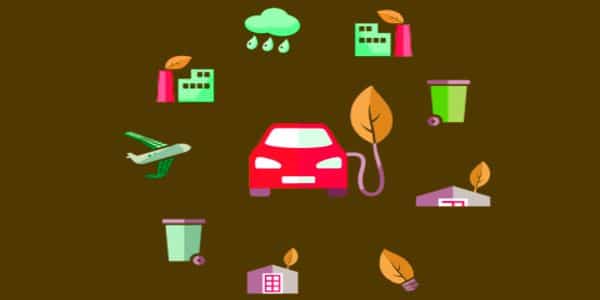A system dubbed the ‘kelp elevator’ tested on the Southern coast of California grows energy-rich algae four times faster than nature, demonstrating the ability for mass-produced algae to power ocean-harvested biofuel vehicles.
For many years now, biofuels from powered engines, jet aircraft, ships, and large vehicles have originated largely from maize and other mass-produced farm crops. Researchers at USC, though, looked to the ocean for what might be an even better biofuel crop: seaweed.
Scientists at the USC Wrigley Institute for Environmental Studies on Santa Catalina Island, collaborating with the private sector, claim that a modern aquaculture technique on the California coast significantly increases kelp growth, producing four times more biomass than natural processes. The procedure uses a contraption called the “kelp elevator” that optimizes the growth of bronze-colored floating algae by lifting and lowering it to various depths.
Unlocking kelp’s potential as a major biofuel source. Researchers at USC, though, have looked to the ocean for what could be an even better biofuel crop: seaweed.
The recently released results of the team show that it could be possible to use the open ocean to cultivate low-carbon kelp crops close to the way land is used to produce fuel feedstocks such as corn except for sugar cane—and with potentially less harmful environmental impacts.
The National Research Council has suggested that the generation of biofuels from feedstocks such as corn and soybeans may increase water pollution. Farmers use chemicals and fertilizers on crops that could wind up polluting waterways, rivers, and lakes. Despite these well-proven risks, 7% of the nation’s transport fuel nevertheless comes from big food crops. Almost all of this is corn-based ethanol.
“Forging new routes to biofuel needs proof that new approaches and feedstocks are working. This experiment on the Southern coast of California is a crucial step, as it shows that kelp can be controlled to optimize growth “Diane Young Kim, the corresponding author of the research, associate director of special projects at the USC Wrigley Institute and professor of environmental studies at the USC Dornsife College of Letters, Arts and Sciences, said.

The thesis was published in Renewable and Sustainable Energy Reviews. The writers include researchers from USC Dornsife, home to the Wrigley Institute, and La Cañada, California-based business Marine BioEnergy, Inc., who have developed and constructed an experimental study framework and are currently developing technologies for open-sea kelp farms.
Though not without obstacles, kelp shows serious promise as biofuel crop
Government and industry see a promise to reduce net carbon dioxide emissions and reliance on foreign oil in a new wave of climate-friendly biofuels. New biofuels may either complement or substitute petrol, diesel, jet fuel, and natural gas.
If it lives up to its promise, kelp is a more enticing choice than normal biofuel crops—corn, canola, soybeans, and switchgrass—for two rather significant factors. For one thing, ocean crops do not fight for freshwater, farmland, or chemical fertilizers. Second, ocean farming does not threaten critical ecosystems while marginal land is cultivated.
Scientists based on the giant kelp, Macrocystis pyrifera, the seaweed that forms magnificent aquatic forests along the coast of California and elsewhere, and washes the beaches in thick mats. Kelp is one of the fastest-growing plants in existence, and its life cycle is well understood, making it suitable for cultivation.
Farming kelp, though, involves facing a few hurdles. To live, kelp needs to be rooted to a substrate and grows just about 60 feet deep in sun-soaked waters. But in open waters, there is a lack of nutrients present in shallow water on the sunlit soil.
To optimize the development of this ecosystem, scientists had to work out how to give kelp a foothold, plenty of sunshine, and access to sufficient nutrients. And they had to see how the kelp could live further under the sea. Marine BioEnergy has also pioneered the idea of kelp cycling, and USC Wrigley scientists have performed a biological and oceanographic study.
The kelp elevator consists of fiberglass tubing and stainless steel cables that carry the kelp in the open ocean. The juvenile kelp is attached to the horizontal beam and the entire frame is lifted and lowered in the water column by means of an automated winch.
Starting in 2019, research divers harvested kelp from the wild, attached it to the kelp elevator, and then deployed it off the northwest coast of Catalina Island, near Wrigley’s marine field station. Every day for about 100 days, the elevator would lift the kelp to reach the surface during the day so that it could suck up the sunshine, and drop it to about 260 feet at night so that it could absorb nitrate and phosphate in the deeper water. In the meantime, researchers have continuously monitored water and temperature levels when compared their kelp to test groups raised in natural conditions.
“We found that depth-cycled kelp grew much faster than the control group of kelp, producing four times the biomass production,” Kim said.
The push to develop a new generation of biofuels
Prior to the experiment, it was unsure if kelp was able to consume nutrients successfully in the deep, cold, and dark environment. Nitrate is a major limiting factor for plants and algae, but the analysis shows that kelp found what it needed to survive when it was lowered into deep water at night. Equally significant, the kelp was able to survive a higher underwater pressure.
Brian Wilcox, co-founder and Chief Engineer at Marine BioEnergy, said: “The good news is that the farm system can be assembled from off-the-shelf materials without new technologies. Once introduced, deep-sea cycling farms could contribute to a new way of producing sustainable, carbon-neutral fuel during the year.”
Cindy Wilcox, co-founder, and president of Marine BioEnergy reports that a Utah-sized ocean patch will be required to make enough kelp biofuel to offset 10% of the liquid petroleum produced annually in the United States. Just 0.13 percent of the entire Pacific Ocean will be taken by one Utah.
The development of a new crop of biofuels has been a focus for California and the federal government. The U.S. Department of Energy’s Advanced Research Projects Agency-Energy has spent $22 million to expand marine biofuel feedstock production, including $2 million to perform a kelp elevator analysis. The Department of Energy has a report to find a billion tons of feedstock each year for biofuels; Cindy Wilcox of Marine BioEnergy said the ocean between California, Hawaii, and Alaska could add to this target by helping to make the U.S. a pioneer in this emerging energy technology.
















